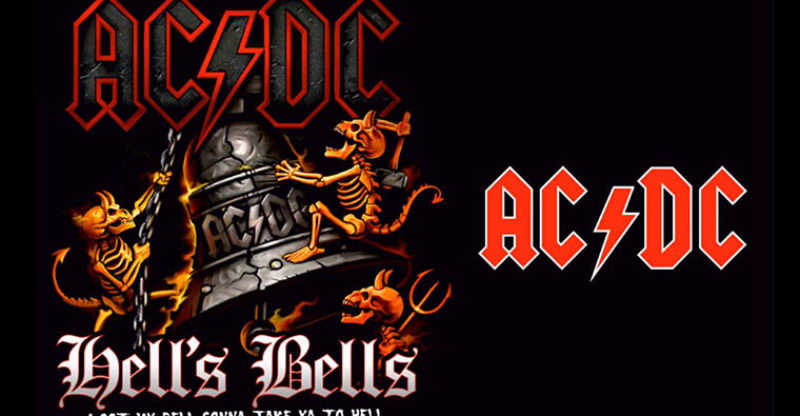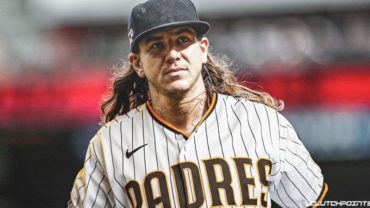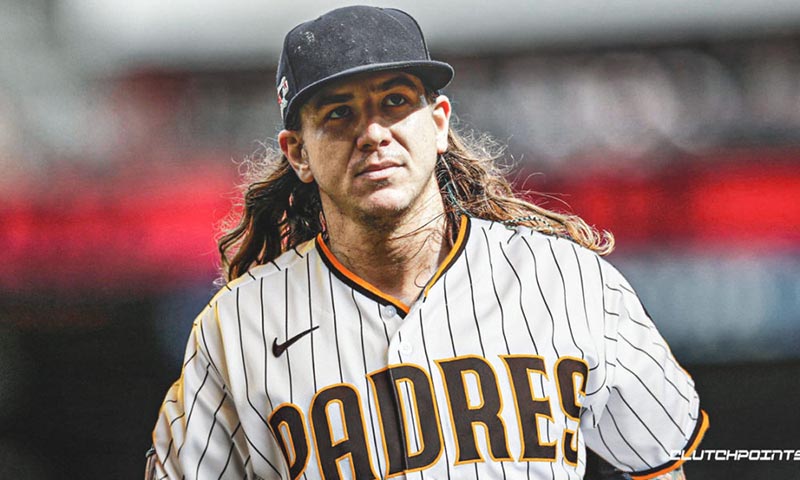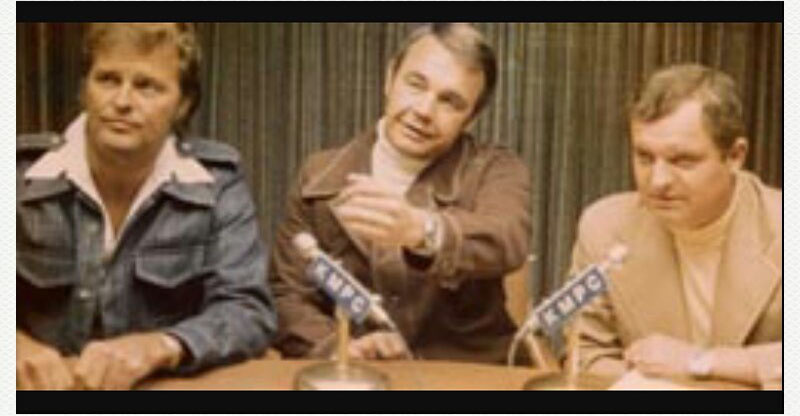Hoffman’s Journey Had Detours, But It Still Ended Up In The ‘Hall Of Fame’
‘Hells Bells’ was his escort!
“There’s nothing better than those doors flying open, hearing some cool music, getting the fans riled up and having that home cooking, going out and trying to get things done.
Loved Every Minute!
“It’s a great role. It’s something I cherished. I couldn’t imagine being in a different role. I wouldn’t have had it any other way.”
The sounds of AC/DC blaring through those speakers at Petco Park wasn’t exactly comforting to the poor guys in the other dugout.
Precarious Position
It meant they were about to face that challenging flutter ball being tossed at them by Trevor Hoffman.
It didn’t even travel 90-something miles an hour.
Made no difference. Wait…and…wait..and wait. And they still didn’t know where the darn ball was.
Unsolved Mystery
Hoffman was a master at deceit and deception.
It was his ticket to baseball’s ‘Hall Of Fame’.
Earlier this week the San Diego icon was deservedly honored with an invitation to be enshrined this summer at Cooperstown.
On July 29, the 50-year old will be joined by Valdimir Guerrero, Chipper Jones, Jim Thome, Jack Morris and Alan Trammell for the Doubleday Field ceremony.
The product of Anaheim’s Savanna High School barely missed induction last year. He received 74 percent of the votes cast by the Baseball Writers Association of America. That left him one percent shy of the 75 percent requirement.
Impressive Numbers
This time it wasn’t that close.
Hoffman accumulated 337 votes (79.9 percent) to become only the sixth reliever to be so honored.
He follows in the footsteps of Hoyt Wilhelm, Rollie Fingers, Dennis Eckersley, Bruce Sutter and Goose Gossage.
One anti-Hoffman voter wrote: “Closers are specialists, and specialists need to go beyond being among the best of their era to get my vote. Hoffman was great at pitching one inning for teams that were more often than not mediocre.”
“I understand it can be picked apart a bit,” Hoffman told the San Diego Union Tribune.
“The save stat hasn’t been around long, and it’s certainly evolving.
“But managers appreciate having one guy at the back end, because it allows everyone else to line up and have success.”
Don’t Do Enough?
Unfortunately the old guard continues to argue that today’s relievers are ninth inning specialists. They don’t often pitch in high pressure situations. Thus they shouldn’t be compared to ‘regular’ players.
But, on a conference call, Hoffman disagreed.
‘That was my role.
“I think it goes back to ultimately what I was asked to do, and I figured out how to maximize what I was capable of doing and tried to do it as best I could.”
Hoffman ranks first all-time among relievers in strikeouts per nine innings (1,029 strikeouts in 952 1/3 innings).
The Avis Of Relievers
The 6’1, 200-pounder saved 601 games during illustrious 18-year career, second only to Mariano Rivera (652).
And his 2.87 earned run average is fifth best ever.
Hoffman also added two Cy Young Award runner-ups and seven All-Star Game appearances to his resume.
Ironically, it took Hoffman a few twists and turns to even become a reliever, let alone at the major league level.
A shortstop at Savanna High, Cypress College and the University of Arizona, Hoffman was the 288th player selected in the 1989 draft.
The Cincinnati Reds picked in the 11th round.
It’s A Humbling Game
In his first 103 games at ‘A’ Charleston, Hoffman struggled. He hit just .212 and drove in a paltry 23 runs.
“I think at a lot of stages in this game you have to be a good self-evaluator,” Hoffman said.
“And 25 errors at the break in ‘A’ ball and hitting .210 isn’t something you want to be sitting looking at. …
“I felt if I was going to be given the opportunity to go to the mound, I was going to be a little bit prepared for it.
“Having a fresher arm due to Dad’s wisdom (Ed), and not pitching after Little League, I embraced it.”
It All Began in 1991
It was his manager at Charleston, Jim Lett, who convinced Hoffman to make that career change in 1991.
Displaying a 95 mile per hour fastball, Hoffman was given the opportunity to both start and relieve over the next two seasons.
The experiment was a rousing success.
In his next two seasons Hoffman flourished, posting a 9-7 record.
He accomplished that on the strength of a 2.90 ERA, and by striking out 169 batters in just 142 2/3 innings.
Left unprotected in the 1992 expansion draft, Hoffman was promptly selected by Florida with their eighth pick.
With Marlin closer Bryan Harvey mentoring him, Hoffman got into 28 games (2-2, 3.28 ERA) before his June 24, 1993 trade to San Diego.
California Kid
And the rest, pretty much, is history.
Hoffman, who was born in Bellflower, California but grew up in Orange County, spent 16 years in San Diego.
That 902 game span included 552 saves, 54 victories and a 2.76 ERA.
Even more remarkable when you consider that his journey was accomplished without one kidney.
An arterial blockage damaged the kidney so severely that it had to be removed when Hoffman was just six weeks old. SIX WEEKS!
So when he arrived at the University of Arizona in 1988, the staff was understandably skeptical.
“What if he got hit by a baseball,” they thought.
Fast Talker!
“I told them the one kidney I have is on my right side. That’s not the side that faces the pitcher when I hit, so it was O.K.
“They bought it,” Hoffman said at the time.
Ah yes, all is well that ends well.
Hoffman ended up hitting .371 for the Wildcats that season. Thirty five points higher than the team’s next best hitter…J.T. Snow.
But it was his arm, not his bat, that led Hoffman to Cooperstown.
“This was my job title,” he said. “This was what I was asked to do, and I did it pretty well.”
His Managers Were Impressed
You won’t get any arguments from former managers Bruce Bochy or Buddy Black.
Praised Bochy: “[Hoffman’s] one of those guys like Tony Gwynn, (Gwynn and Dave Winfield are the only other Padres in the ‘Hall’) they never feel like they’ve arrived.
“Tony never thought, ‘Well, I’m hitting .360 … ‘ He was never content.
“And Trevor’s the same way. They just keep working and make sure that they’ve got goals they want to reach.”
Added Black: “The daily preparation for his job, that focus and dedication each day to prepare for the ninth inning … It was incredible to see live.
“I played with George Brett, a Hall of Famer who was a great worker. But Trevor took it to a level and a commitment and ‘Hall Of Fame’ caliber.”
Proud Sibling
Brother Glenn, himself a nine year major league veteran and the Padres current third base coach, oozed with pride when discussing Trevor.
“What’s special about (Hall of Famers)? It’s not all about numbers and stuff. It’s about being a leader and heart. It’s unbelievable. They stand out so much more. … They have that grit, that extra drive.
“San Diego is his city and his town.
“The people here love him, and in all the years before that, he’s built that relationship to where they can celebrate, too.”
Trevor succinctly summed it up thusly: “To have something personally be able to give joy to the city, knowing that I’ve been backed by so many so well for so long, there’s a lot of pride there.
Mutual Admiration Society
“There’s a lot of excitement to be able to give back, finally, other than just saying ‘thank you.’
“I think people are going to be able to stick their chests out a little bit and say, ‘he’s one of ours and we’re proud of him’.”
Padre Executive Chairman Ron Fowler put it all into proper perspective.
“It’s a great day to be a Padre fan.
“It’s an even better day to be Trevor Hoffman.”
Well hell’s bells, I hope so!
John Stellman
Latest posts by John Stellman (see all)
- Eight Teams With A Common Bond, And A Ninth Just Crashed The Party - February 16, 2022
- Is This Dodgers Team Better Than Last Season’s World Champions?? - February 15, 2021
- New GM Minasian: Is 3rd Time The Charm, Or Is It 3 Strikes You’re Out? - November 16, 2020







